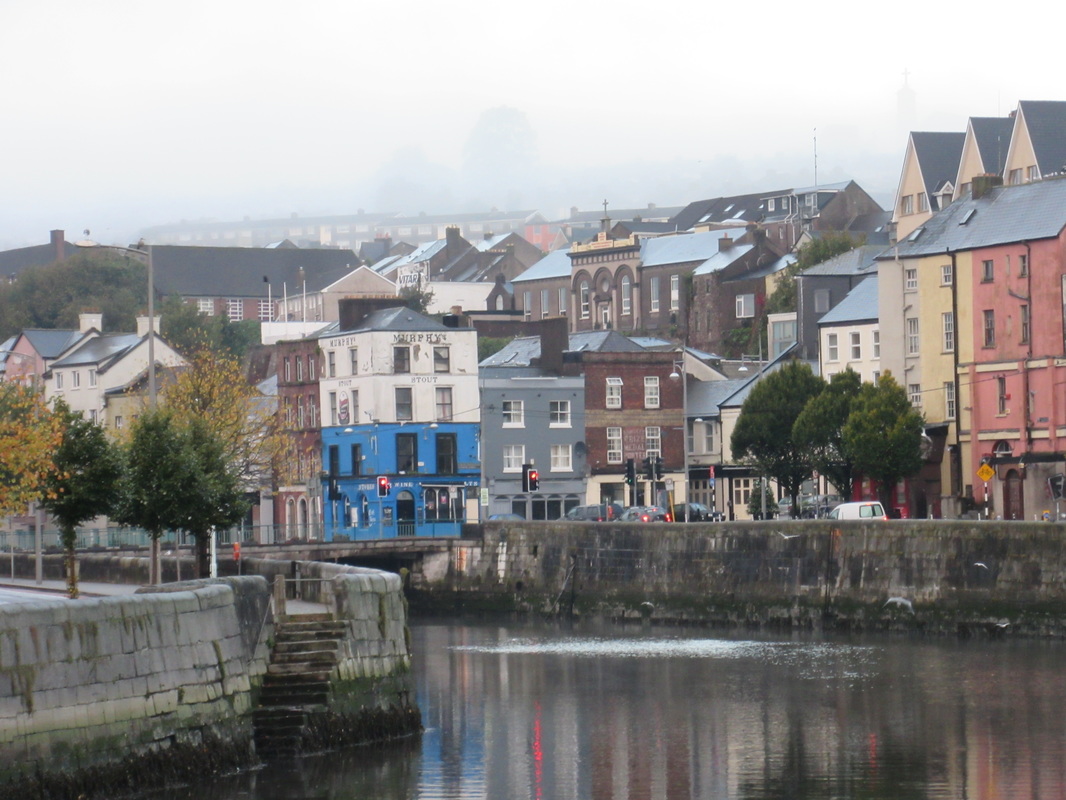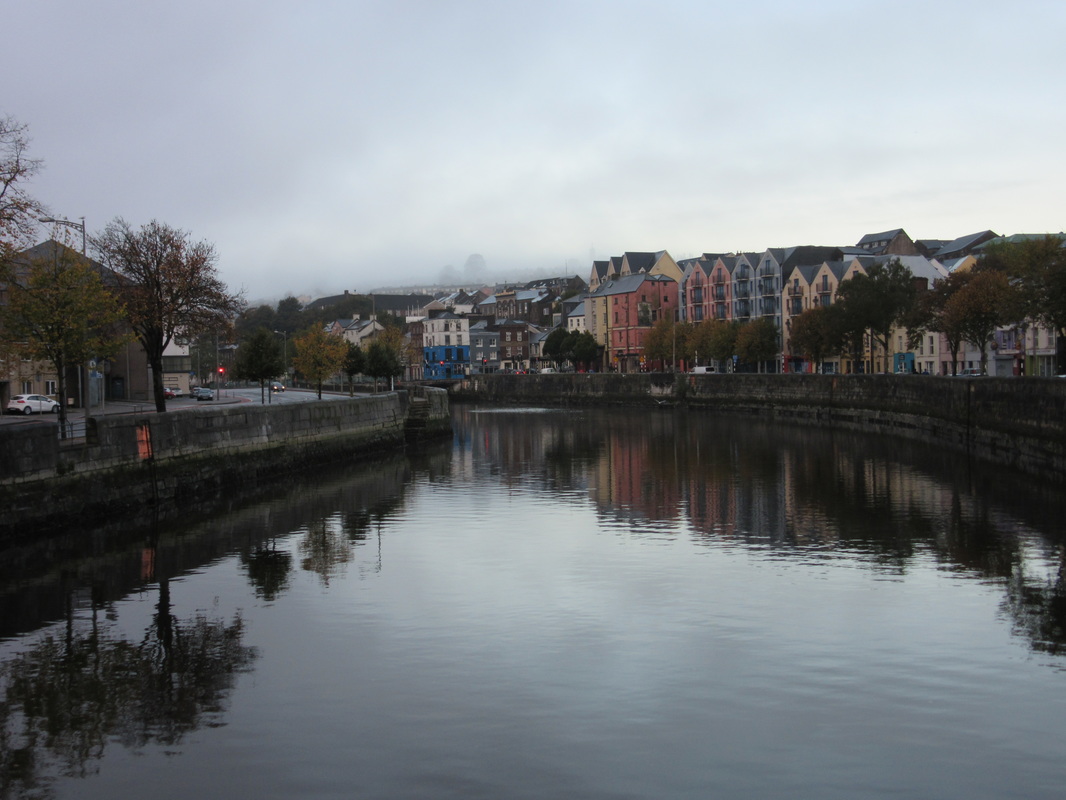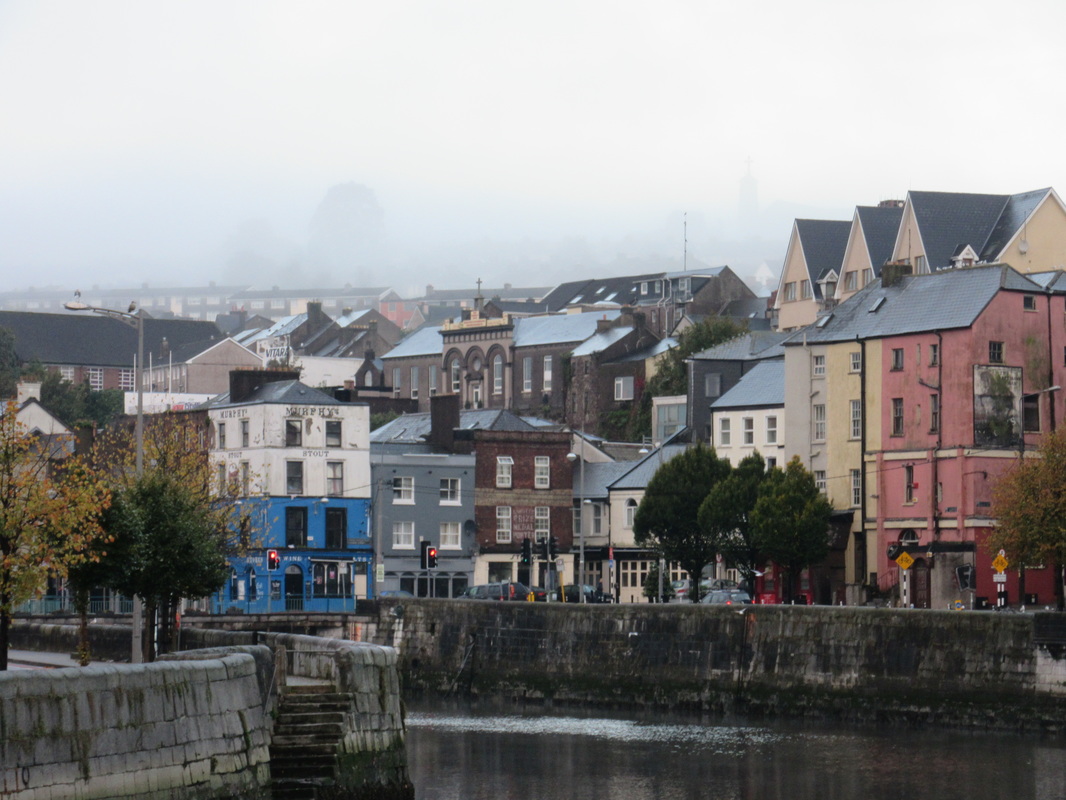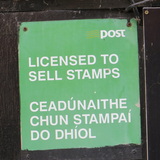| When I first read of ‘The Red City’ being the nickname for Gurranabraher, it stuck in the grey matter as a little nugget – relatives who had grown up in Mount Nebo had never shared that gem with me. When I find a nugget, sooner or sometimes much later, other little bits of knowledge cling on as they float by, increasing the extent of information – those dots of knowledge forever connected, in my strange head anyways. Red City makes an appearance in Cónal Creedon’s Passion Play – ‘This Could be Heaven’ is great to read, brilliant to hear, an experience to see arising from the dark, and well worth few moments yielding to your imagination. This morning, heading down to Brian at the fish stall on the Coalquay Market for our surprise stash, we spotted that the Red City had yielded to the clouds. Reason enough to prompt this ramble. Reason enough to put out there. Mick D was a census enumerator a few months back in the Red City. The official forms were ‘Gurranebraher’ whereas locals had ‘Gurranabraher’ – another riddle awaiting explanation. | …The main contractors for the project were Messrs Murray and Lane, Builders..Sand and gravel was supplied by John a. Wood Ltd. of Carrigrohane Road. Cooking and lighting facilities were provided by Cork Gas Company. Also involved were Swann’s of Knapp’s Square…..Hickey’s of Maylor Street not only supplied 2,500 tons of Portland Cement, but also 300,000 red roof-tiles. The colour of the tiles soon resulted in some local wag nicknaming the area ‘Red City’!! My city is a Royal town, dressed up in crimsons and gold. In the distance, through the mists of time and coal smoke I hear the cry of an Echo boy, the sound of men walking and whistling their way home from work to the Red City of Gurranabraher, the chimes of an ice-cream van across on Spangle Hill, the bells of some cathedral or other, the yelps of children from Roches Buildings playing ball along the road. “Can you imagine Shortly after this the friars erected a small chapel high in the hills overlooking the city from the northwest in a place which became known as Cilleen na Gurranaigh – The Little Church of The Groves. The chapel itself was known as ‘Teampaill na mBrathair’, many years later, the whole area had become known as ‘Gurradh na mBrathair’ – The Grove of the Brothers, or Friars Grove. The time spent by the Franciscans in Gurranabraher is marked by the naming of a row of houses just below Barrett’s Buildings known as Friars Avenue.” |
|
0 Comments
Your comment will be posted after it is approved.
Leave a Reply. |
AuthorFrom Cork. SUBSCRIBE
Unless otherwise specifically stated, all photographs and text are the property of www.readingthesigns.weebly.com - such work is licenced under a Creative Commons Attribution - ShareAlike 4.0 International Licence
Archives
May 2024
Categories
All
Blogs I Read & LinksThought & Comment
Head Rambles For the Fainthearted Bock The Robber Póló Rogha Gabriel Patrick Comerford Sentence First Felicity Hayes-McCoy 140 characters is usually enough Johnny Fallon Sunny Spells That’s How The Light Gets In See That Tea and a Peach Buildings & Things Past Built Dublin Come Here To Me Holy Well vox hiberionacum Pilgrimage in Medieval Ireland Liminal Entwinings 53degrees Ciara Meehan The Irish Aesthete Líníocht Ireland in History Day By Day Archiseek Buildings of Ireland Irish War Memorials ReYndr Abandoned Ireland The Standing Stone Time Travel Ireland Stair na hÉireann Myles Dungan Archaeouplands Wide & Convenient Streets The Irish Story Enda O’Flaherty Cork Archive Magazine Our City, Our Town West Cork History Cork’s War of Independence Cork Historical Records Rebel Cork’s Fighting Story 40 Shades of Life in Cork Roaringwater Journal |






